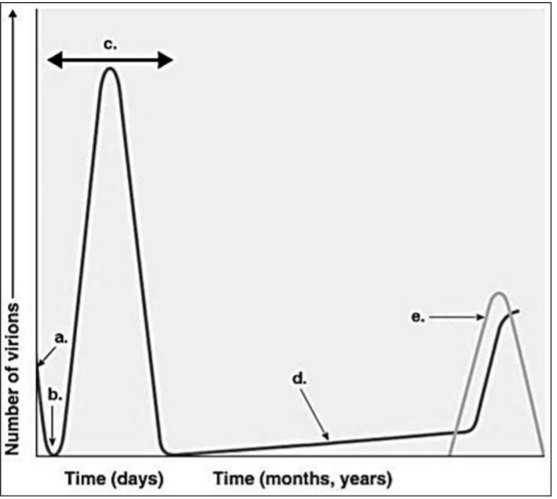MCB 2010C - Module 9
1/20
There's no tags or description
Looks like no tags are added yet.
Name | Mastery | Learn | Test | Matching | Spaced |
|---|
No study sessions yet.
21 Terms
A feature that may be found in viruses but never in bacteria is
may contain an RNA genome
The morphological types of viruses are ultimately determined by the
nucleic acid
A clear area against a confluent "lawn" of bacteria is called a
plaque
Which of the following statements is NOT true of lysogeny?
It causes lysis of host cells
Which of the following statements about viral spikes is FALSE?
They are found only on nonenveloped viruses
A viral species is a group of viruses that
has the same genetic information and ecological niche
Which of the following is NOT used as a criterion to classify viruses?
biochemical tests
Which of the following is NOT utilized to culture viruses?
culture media
Bacteriophage replication differs from animal virus replication because only bacteriophage replication involves __________.
injection of naked nucleic acid into the host cell

Assume a patient had chickenpox as a child. Which line on the graph in Figure 13.2 would show the number of viruses present in this person as a 60-year-old with shingles?
e

Assume a patient has influenza. During which time on the graph in Figure 13.2 would the patient show the symptoms of the illness?
c
A persistent (or chronic) infection is one in which __________.
the disease process occurs gradually over a long period
Which of the following would be the first step in biosynthesis of a virus with a - (minus) strand of RNA?
synthesis of double-stranded RNA from an RNA template
An infectious protein is a __________.
prion
An envelope is acquired during which of the following steps?
release
A virus's ability to infect an animal cell depends primarily upon the __________.
presence of receptor sites on the cell membrane
A lytic virus has infected a patient. Which of the following would best describe what is happening inside the patient?
The virus is causing the death of the infected cells in the patient
Some viruses, such as human herpesvirus 1, infect a cell without causing symptoms. These are called __________.
latent viruses
Oncogenic viruses __________.
cause tumors to develop
What is NOT true regarding viruses that infect plants?
They are often cultured in embryonated chicken eggs
A viroid is a(n) __________.
infectious piece of RNA without a capsid